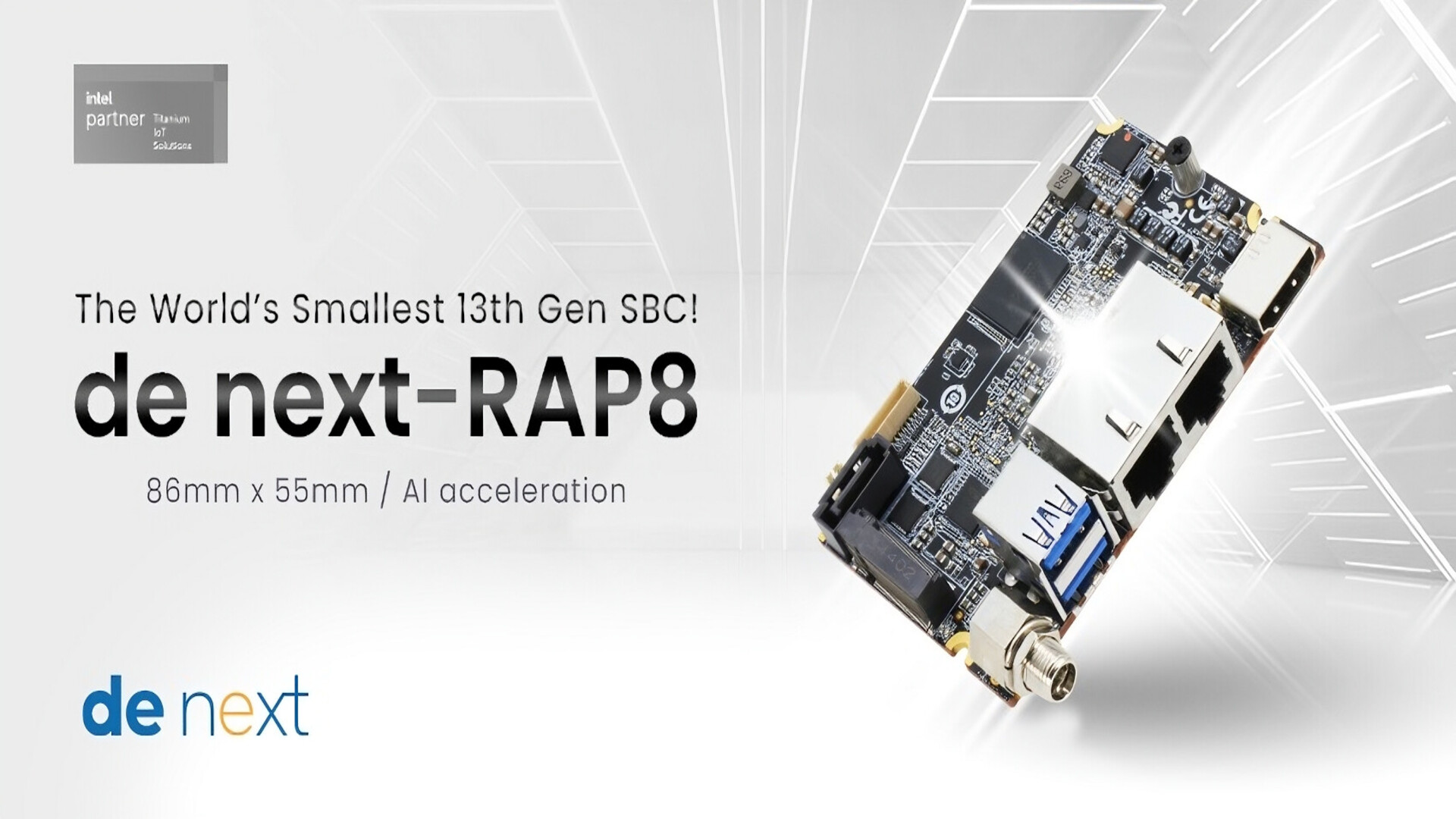
- de next-RAP8 SBC may be tiny in size, but pushes boundaries in robotics and industrial hardware design
- Not your average single-board computer, this one runs Intel Core i7 and LPDDR5x memory
- Add-on modules unlock AI and storage power, but complexity holds it back for offices
AAEON has introduced the de next-RAP8, a single-board computer that combines 13th Gen Intel Core processors with a compact footprint of just 84mm x 55mm.
This makes it similar in size to the Raspberry Pi 5, yet it includes components typically reserved for much larger systems.
The board is available with the Intel Core i3-1315UE, i5-1335UE, or i7-1365UE, each running at 15W.
Designed for robotics and industrial systems
The biggest model delivers up to 10 cores and 12 threads, paired with up to 16GB of LPDDR5x memory and integrated Intel Iris Xe graphics.
These specifications suggest the board could handle lightweight multitasking and media processing, although performance would still be constrained by thermal limits and the lack of a discrete GPU.
While it delivers more performance than typical embedded systems, its layout and expansion capabilities do not match the flexibility expected from workstation PCs.
Its connectivity includes dual Intel RJ-45 Ethernet ports supporting 2.5GbE and 1GbE, two USB 3.2 Gen 2 Type-A ports, HDMI 1.2a output, and a 12V DC jack.
Additional features are accessible through a 40-pin header, which supports 8-bit GPIO, USB 2.0, and RS-232/422/485 interfaces. There is also optional support for SMBus/I2C.
These features suggest the board is intended for integration into custom hardware systems, including drones and robotics platforms.
Further expansion is available via an M.2 2280 M-Key slot for Wi-Fi, 4G, or storage modules, and an FPC connector offering PCIe x4 Gen 3.
AAEON’s own adapter cards, such as the PER-T642 and PER-R41P, extend functionality to include AI acceleration and additional storage or graphics capture capabilities.
The de next-RAP8 is well suited for specialized devices built for robotics, drones, kiosks, and other industrial systems that require custom integration in space-constrained setups.
However, the need for add-on cards adds complexity that typical office setups don’t require, making it unsuitable as a business PC, which should offer built-in features and better scalability.
Via TechPowerUp






